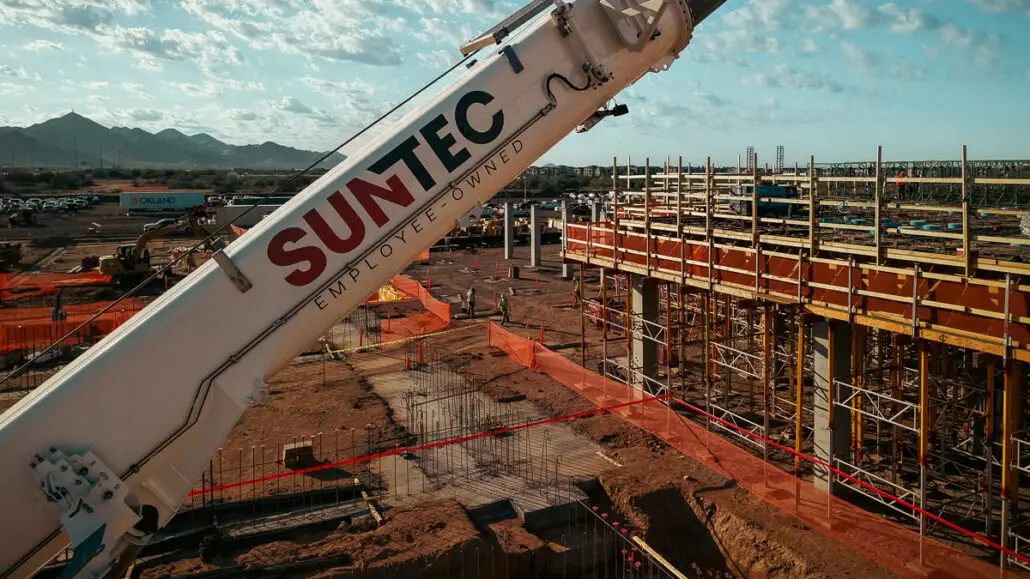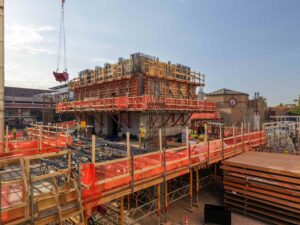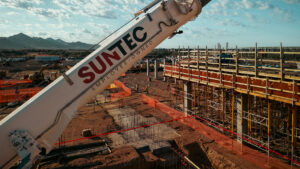Corina Vanek • Arizona Republic • Oct. 13, 2025
Metro Phoenix ranked second in construction job growth in the last five years, eclipsed only by Minneapolis.
That quickly outpaced job growth overall. By that measure, the region ranked seventh nationally from February 2020 to August 2025, Anirban Basu, chief economist for Associated Builders and Contractors said in an economic outlook presentation.
According to data from the Arizona Office of Economic Opportunity, there are about 229,000 construction workers in Arizona, across all sectors of the industry and job levels. That compares to 171,000 Arizona construction workers with jobs in August 2019, before the COVID-19 pandemic disrupted nearly all sectors of business.
But even then, companies are struggling to fill jobs, as a glut of current “megaprojects” has propelled Arizona’s construction industry into a $25 billion a year business.
“It went from a $5 billion industry in 2018 to a $25 billion industry, but we didn’t get five times the construction workers,” Anthony Jeffers, director of project development for the Southwest region for Hansel Phelps said. “People have to do more with less.”
In April, Gov. Katie Hobbs announced a new apprenticeship and grant program aimed at addressing the state’s shortage of construction workers, citing a need to fill 20,000 construction jobs in the state by 2030.
Nearly all construction positions need more people, but many who work in the profession said electricians, machine operators, safety professionals and supervisor roles are in the highest demand. According to local union job postings, wages in those jobs can vary greatly, starting at about $20 per hour and going to about $50 per hour, depending on the role and the person’s experience.
Hensel Phelps does about $900 million worth of work in Arizona annually, Jeffers said, and has between 50 and 75 open positions nearly all the time.
“We’ve been fortunate because the industry is so robust, that there has always been more work than people,” he said.
While the company has openings in almost every position, some that are most difficult to fill include project managers, project engineers, superintendents, safety professionals and others that require experience and more specialized skills.
An acute shortage of qualified candidates for those positions means training and employee retention are critical to being able to keep up with the demand for work.
“There is so much opportunity in this industry to get training,” Jeffers said. “There is so much more training available now than there ever was.”
The employment market is so tight that headhunters reach out to employees every week, said Aaron Wolf, who owns both a general contracting and steelwork company in the Valley.
“There is so much opportunity in the Valley, there’s always someone that’s busy and needs bodies,” he said. “My folks get called literally every week. Even I get calls, and I told one of them, ‘You know I own this company, right?’”
He has about 48 employees, and until recently never had a dedicated human resources role, he said. But recently, to stay competitive, he had to add human resources so there would consistently be someone focused solely on hiring.
Leaders in the industry acknowledge that construction can be a hard sell for job seekers, with work often needing to be done outside in the sun and requiring physical labor.
“Working with your hands takes a certain passion,” Andy Snedeker, director of business development and marketing for Suntec Concrete, said.
Some companies have taken creative approaches to adding perks for employees, like Suntec’s move to employee ownership. In 2024, the company created an ESOP, or employee stock ownership program, which grants employees ownership stake in the company, and provides retirement savings to employees.Suntec also launched a training and development program called “Suntec University” aimed at teaching employees life skills and industry skills, including financial literacy, communication, leadership development to help employees advance, Snedeker said.
“There is a lot of growth here that happens internally,” he said.
David Giannetto, CEO of Felix Construction, said his company employs about 400 people, but at any given time it is hiring for between 20 and 50 jobs, with no expectation to fill them all at the same time.
The need to shift the perspective of construction from an undesirable job to a viable career option has required the whole industry to shift, he said.
“We used to be a wild, cowboy industry,” he said. “The whole industry has had to step up, get into training. It’s much more sophisticated now.”
Like Suntec, Felix recently became an ESOP, a move that can help retain employees, he said.
Giannetto said about 15 years ago the company got a new truck and a superintendent painted a help wanted sign, along with the phone number, onto it.
“I asked him what we would do once we weren’t hiring anymore, and he said, ‘It’s never happened yet,’” Giannetto said.
Giannetto said the industry is in a state of flux, as people often turn to office or remote work rather than an on-site job like construction.
“A lot of people in the field do have college degrees, but for people who don’t want to or didn’t go to college, construction is a profession now,” he said. “It can be very high paying. You can make a lot of money and be educated and appreciated all along the way.”




